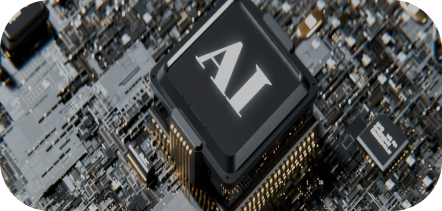
Modernize
Modernize Your Business and Maximize Performance With Upstart 13
Regardless of what industry you operate within, the world around you is changing. If you don’t keep up, you will inevitably lag behind. However, pursuing modernization merely for the sake of it will strain your resources and leave you spinning your wheels. Therefore, you must leverage a strategic approach to modernization that aligns with employee needs, consumer preferences, and organizational goals.
Below, the Upstart 13 team takes a deep dive into how you can modernize your business, maximize results, and empower your team in the process.


The Spirit of Modernization
Before you create a game plan for upgrading your technologies and processes, it’s important that your leadership team is on the same page. Do you want to modernize just because a competitor has? Or have you defined a purpose that is unique to your business and its vision?
Admittedly, observing changes to the way your competition operates is a good indicator that it’s time to modernize your own operations. However, that observation cannot be your primary motivation.
Instead, you need to determine what you hope to achieve through modernization. Collaborate with other business leaders to define your why. Keep things high-level first before shifting your attention to more specific and measurable goals.
Deciding Where to Focus Your Resources
After you know why you want to modernize processes, staff skills, and technology, it’s time to decide where to start. Make a list of all of the various applications and workflows that are ripe for an overhaul. Next, consider three factors to prioritize the topics on your list:
1. Return on Investment (ROI)
2. Time to Value
2. Initial Investment Costs
By applying these three tests, you can quickly move some fringe projects to the bottom of your priority list. Low-value initiatives that will take months to yield a return should never be placed ahead of more impactful projects.
When you're considering initial investment costs, ask yourself two questions:
1. Does my organization have the resources to take on this project?
2. Can we afford not to modernize this area of our business?
From there, you can shift your attention to the projected ROI and time to value of each modernization initiative. Typically, you’ll find that prioritizing the endeavor that offers the best balance of ROI and time to value will be the right move for your business, provided you can take on the upfront costs.
By prioritizing a strong ROI, you’ll set the stage for subsequent modernization efforts. Roll the extra capital and newly freed-up resources into the next item on your priority list and repeat this process until you’ve successfully addressed every area of need.
Challenges and How to Overcome Them
If you want your modernization efforts to succeed, you must familiarize yourself with three common challenges. Here are the primary obstacles you’ll face and how to navigate them:
Resistance to Change
Naturally, some of your team members (and possibly your customers) are going to resist change. Long-time employees may be particularly obstinate, as forming new habits and learning how to use modern systems can be frustrating. However, change is also necessary, which means you need to proactively address resistance and encourage buy-in.
First, make sure to involve your team members in the change process early on. Don’t spring any surprises on them. Explain what processes you are modernizing, why, and how it will affect them. Also, relay your projected timeline so that they know how long they have to prepare.
Don’t just tell them what’s happening. Gather feedback so you can gauge how they feel about the impending changes. Consider their concerns and if necessary, augment the scope or goals of the project accordingly.
Once the project gets underway, support your staff through training and education. If your employees are confident in their abilities to use the new processes and technologies, they are much more likely to embrace the changes.


An Unfocused Approach
Never modernize for the sake of it. You should identify what you want to change, why, and what results those modernization efforts will yield for your organization.
In most instances, you’ll need to leverage a segmented approach, which involves replacing one or two technologies or processes at a time as opposed to all at once. After each initiative, you’ll achieve efficiency gains and cost savings that make the next project more viable.
Modernizing Too Much Too Fast
Even if you feel that your company has fallen behind the times, don’t modernize too much, too soon. Doing so will leave your employees feeling overwhelmed and place a heavy burden on your resources.
Give your team time to adapt to each wave of changes. Also, ensure you are updating your policies and procedures to reflect how new technologies or processes have altered your workflows.


How Upstart 13 Facilitates Impactful Modernization
No two modernization initiatives are the same. Instead, each requires a unique and nuanced approach.
Our team can facilitate modernization along multiple fronts. From replacing legacy applications with modern alternatives to facilitating a full-scale transition from analog processes to digital alternatives, we tailor the scope of our support to align with your organization’s needs. We can also help you reinvent the way you handle data, interact with customers, and run your day-to-day workflows.
Perhaps most notably, we are blurring the lines between user experience (UX) and user interface (UI) principles. Instead of asking your team to adopt “your way,” we shape experiences around how your employees like to work while empowering them to get more done.
Let’s Connect
If legacy applications or rigid processes are holding you back, it’s time to modernize your organization and tap into the full potential of your workforce. Upstart 13 can help you do both with our purpose-driven approach to technology.
We build software people love while simultaneously ensuring that our deliverables propel your business into the future. Our customizable solutions can evolve with your company's needs, ensuring a long product life cycle, strong return on investment, and condensed time to value.
Ready to learn more? Let’s connect and discuss how to transform your business into a nimble, modern organization.

Scale




